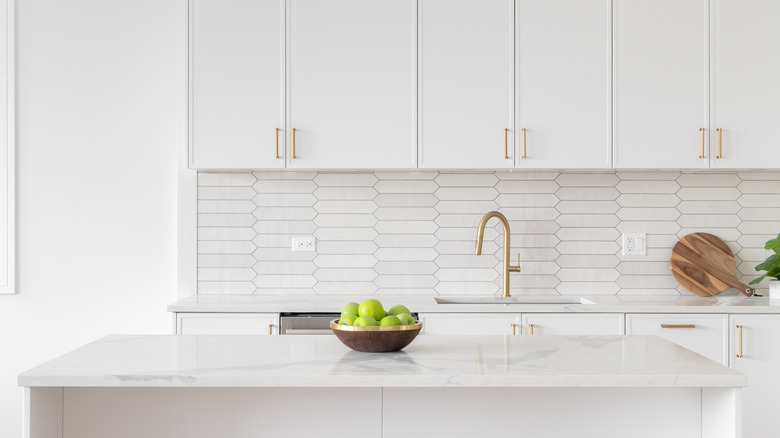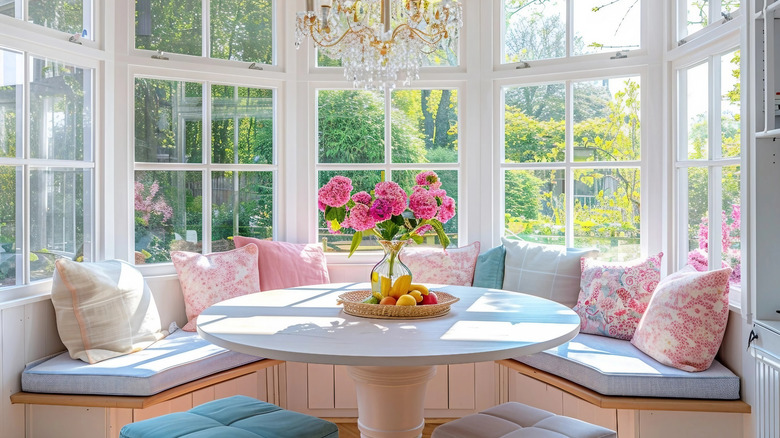Keep A White Kitchen From Looking Dull With One Simple Design Rule
We may receive a commission on purchases made from links.
When you crave the sleek definition of minimalism and modernity, a white kitchen offers pristine simplicity that can make for a gorgeous design. However, an all-white kitchen may easily fall victim to a flat or dull appearance, especially if there is a lack of texture or material variety. To combat this challenge, one simple design rule to follow that will help elevate the look of your home is to add upholstered pieces for a more vibrant and tactile experience. Upholstered furniture in your kitchen brings in pattern and texture alongside pops of color, creating a sense of coziness in your space.
The key to success is ensuring that the fabrics added to the space are functional, easy to clean, and damage-resistant. After all, many folks shy away from bringing textiles into their kitchens for fear of soaking, staining, or wear and tear. But many designers encourage the use of fabric, particularly upholstered furniture, in the kitchen despite the challenges. As you're trying to decide whether custom upholstery or off-the-shelf furniture is right for your home, you should also consider that there are many ways to protect these materials in a place as bustling as the kitchen to better invite the perfect accent into an existing all-white design.
Introduce textiles through upholstery
For added texture, upholstered barstools and dining chairs are a go-to by the kitchen island or at a kitchen table. Not only do they provide comfort, but by using upholstered furniture, you can choose dining chairs that won't make your table look boring, rather than pieces that only offer one note of texture. Opting for an upholstered bench over a wooden one at a breakfast nook will enhance the cozy vibes. Some designers also recommend adding fabric to light fixtures, like an upholstered lamp shade above the central island or above the kitchen table. Other ways to refresh your kitchen by adding texture could include pillows on kitchen benches or chairs, layered rugs, placemats on the dining table, and using curtains or fabric shades over windows. Pair these alongside upholstered pieces to boost their appeal.
Adding upholstered pieces to your kitchen design to uplift a drab space is all about choosing the right materials. When using upholstered furniture in your kitchen, opt for performance fabrics, which are specially engineered to be more durable, stain-resistant, fade-resistant, and, at times, water-resistant. These fabrics can boost the functionality of an item, allowing it to be well-suited for rooms like the kitchen, which see a lot of action. Or, if performance materials aren't within your budget, you could treat your fabric with a protective upholstery sealant like Scotchgard Fabric Water Shield instead. Simply purchase a protective spray and apply it yourself. You might also be able to find standard textiles treated after-market, making the process a little easier for you.

